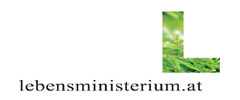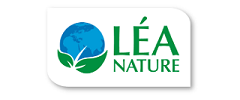WECF side event at Beijing+10 on Women and Environment
and USA withdraws its anti-sexual and reproductive rights ammendment
07.03.2005 |Muborak Sharipova
and
USA withdraws its anti-sexual and reproductive rights ammendment
WECF's Beijing+10 Side-event "Women and Environment"
On Saturday 5 March, the side-event "Women and Environment" took place at the Church Building at the UN in New York. Opening speaker Irene Dankelman gave the following message:
Women and Environment: weaving the web of life
Oslo, 10 December 2004, Prof. dr. Wangari Maathai, accepting the Nobel Peace Prize:
"Although this prize comes to me, it acknowledges the work of countless individuals and groups across the globe. They work quietly and often without recognition to protect the environment, promote democracy, defend human rights and ensure equality between women and men. By so doing, they plant seeds of peace.” Prof. Maathai, a biologist by profession, was the first woman to be appointed as professor in the natural sciences in Eastern Africa.
The world in which we live is different for every human being, but, in general, women’s lives vary greatly from those of men because of patterns of socialization related to gender . A majority of the world’s poor are women and children; in 2000 63 million primary age girls did not enrol in school; and two third of the world’s illiterate are women. In dozens of countries women still lack access to public services and private opportunities. Worldwide women have unequal rights and insecure access to land and other natural resources. Many women still suffer from diseases and chronic health problems stemming from poor nutrition, environmental conditions and failing health care provisions. They constitute only 15.6 per cent of the members of parliament worldwide (in 1995: 11.7%; in 13.8% in 2000). In my own university only 11.8% of the professors are female (similar to the overall percentage in the Netherlands), and that is even less in the sciences department. Apart from a merely technical and statistical angle, gender carries a strong element of politics and power. As Hillka Pietilä (2002) concluded: gender equality requires “transformative change”.
We, women should not be seen as a single homogeneous group. A slew of differences must be recognized, including social class and caste, race and education. And the need to address not only women, but also men in terms of gender and environment must be stressed over and over again. As the United Nations concluded in 1995: “Policies that target women only cannot achieve the best results. Nor can those which assume that public actions are gender-neutral in their effects. Hence, promoting gender equality implies a profound change in socio-economic organization of societies: not only in the way women work, live and care for the other members of the households, but also in the way men do, and in the way their respective roles in the family and community are articulated with the need to earn a living.”(UN, 1995)
Women and environment
Since the start of human history, women have contributed essentially to the conservation, use and management of natural resources. Around the world they play distinct roles from men: in managing agricultural lands, plants, animals and forests, in collecting and managing water for domestic use and income generation, in the collection and use of (bio-)fuels. By so doing, they contribute time, energy, skills and personal visions to family and community development. Their extensive experiences make them an invaluable source of knowledge and expertise on environmental management and appropriate actions.
On study walks in the Kanak Valley of the province of Baluchistan, Pakistan, village women identified 35 medicinal plants that they commonly used. In an interview, Rehnat Khatoon, an older village woman, referred to the wild medicinal plants in the following terms: “They grow without master!” All her friends laughed because what she was really saying was that wild plants have no husbands to buss them around or to control them. (FAO)
In Yazd, the desert capital of the Islamic Republic of Iran, women devised a number of highly sophisticated technologies for agricultural production, such as food production in tunnels constructed underground (www.undp.org/seed/unso/women).
The commitment, courage, resilience and patience of millions of individual and organized women in sustaining their environment is amazing: women scientists, women activists and local rural and urban women. Day after day they perform their communities productive and reproductive tasks, sustaining the interface between the human and physical environment, thereby demonstrating a deep understanding and technical knowledge about the ecological characteristics of their environment:
“Life is a whole, it is a circle. That which destroys the circle should be stopped. That which maintains the circle should be strengthened and nurtured.” Julekha Begum, peasant woman from Gaibandha, Bangladesh (1992).
Ruth Lilongula from the Solomon Islands: “Biodiversity is the very core of our existence within our communities. You cannot say how many dollars this is worth because it is our culture and our survival. In this context biodiversity is invaluable… We value our surroundings as our identity, as who we are and our inheritance that is given to us…Our environment is many things, a classroom, a pharmacy, and a supermarket.” (UNEP/IT, 1999)
These are only a few of the innumerable examples that show women’s interaction with environment. However: as a recent Online Discussion on Women and the Environment has shown the number of women in environmental decision-making is still very limited – with some exceptions. Women’s knowledge and their interests are often ignored in decision-making and development planning, as well as in science and technology; access to and control over resources is limited and threatened; and their health and wellbeing are affected by pollution and environmental degradation.
Gender equality and equity are not only a question of fundamental human rights and social justice, and that is also through in the environmental area. As several studies have underlined (e.g. World Bank 2002): gender equality is essential for countries’ economies and the success of development initiatives. As Lorena Aguilar (2002) – senior gender advisor of IUCN - argued, sustainable development is not possible without equity.
A short history
In the lives of local women, the sociosphere (the social environment) and the ecosphere (the physical environment) are linked through their day to day interactions with the environment. It was in 1970 that Esther Boserup wrote her semantic work on the role of women in economic development and agriculture. We have seen several women who took the first steps to link the sociosphere and ecosphere in policymaking: Rachel Carson, Barbara Ward and Donella Meadows, Gro Harlem Brundtland, Mrs. Mubarak and Minister Ebtekkar. According to her biographer (Patricia Hynes, 1989) Rachel Carson – who was a marine biologist by profession - is a powerful example of what one individual can do in the world, with or without a political base.
In 1962 Carson wrote in Silent Spring: “Man’s attitude toward nature is today more critically important, simply because of his new found power to destroy it… We now wage war on other organisms, turning against them all the terrible armaments if modern chemistry, and we assume a right to push whole species on the brink of extension….” (p.5-6) her work resulted in strong legislation and the establishment of environmental institutions in the USA and throughout the world.
Although at first glance, the relationship between the human society and the physical environment seems to be class- and gender-neutral – affecting both women and men in a similar way – upon closer examination, one realizes that it is not neutral at all. The differentiated socio-cultural construction of relationships between women and men means that the linkages between people and the physical environment work out differently for either sex.
In the mid-1980s organizations such as the Centre for Science and Environment (CSE) in India began to report on the specific consequences of environmental degradation on women.
“Probably no other group is more affected by environmental destruction than poor village women. Every dawn brings with it a long march in search of fuel, fodder and water. It does not matter if the women are old, young or pregnant: crucial household needs have to be met day after weary day, every time longer and more tiresome….”(CSE 1985: 172)
During the second UN World Conference on Women (Nairobi, 1995) the international Environment Liaison Centre organized a series of workshops on ‘Women, Environment and Development’. The expert meeting concluded that: “The growth of women’s power and sustainability of development are ecologically tied.”(ELC, 1985) The Forward Looking Strategies of the UN Conference mentioned that ‘the environment’ was an area of concern for women. It was the first time in history that at global level the linkages between gender issues and environment were highlighted: two streams were converging (merging) – the one on gender and development, with the one on environment and sustainable development.
Not only did the outcome document of the United Nations Conference on Environment and Development (UNCED) in Rio de Janeiro – 1992, have 145 references to the specific roles and positions of women in environment and development, but it also recognized women as one of the nine major groups to achieve sustainable development, and included a separate chapter (24) in Agenda 21 entitled: ‘Global Action for Women towards Sustainable and Equitable Development.’ Maurice Strong, the Secretary General of the 1992 Earth Summit, played a major role in putting gender on the UNCED agenda and beyond: “There is a pressing need to continue to centralize women’s issues and to ensure the incorporation of their collective perspectives, experiences and contributions to sustainable development. The implementation of the programme areas of Agenda 21 which extensively incorporates the important role of women in SD will help to meet this need.”(UNIFEM, 1993)
Here in New York we commemorate the 1995 UN Conference on Women that brought thousands of women (government delegations, non-governmental organisations and civil society) together in Beijing. Section K of the Beijing Platform for Action focuses on Women and the Environment, and has three strategic objectives:
K1. Involve women actively in environmental decision-making at all levels.
K 2. Integrate gender concerns and perspectives in policies and programmes for sustainable development.
K3. Strengthen or establish mechanisms at the national, regional and international levels to assess the impact of development and environmental policies on women.
These days we are reviewing how far we are in meeting these objectives and identify areas that need renewed action and leadership.
Women organize for a healthy environment
Since the early 1980s international, regional, national and local women’s organizations were important actors in empowering women and bringing a gender perspective towards sustainable development. It is often through women leaders and organisations, that women’s voices are speaking out against environmental destruction and for a peaceful and healthy planet. International organisations such as WEDO (the Women’s Environment and Development Organisation), have followed the international agenda closely, and tried to influence it through their advocacy work. Since 1992 particular thematic networks have been formed and developed in centres of expertise, such as the Gender and Water Alliance, ENERGIA (gender and sustainable energy), the Gender and Climate Change Network, Diverse Women for Diversity (gender and biodiversity). These groups are instrumental in promoting the integration of gender into specific sectors and enhancing women’s voices in those areas.
Also regional networks on women and environment have played key roles in enhancing environmental security and at the same time contribute to women’s empowerment; e.g. the Women in Europe for a Common Future (WECF). Organizations like WECF, have been advocating for safe chemical and health policies, and also look into issues such as energy and climate change, safe water, and sustainable agriculture – with particular emphasis on the European context, regulations and institutions.
Professional women’s organizations have been established, such as the Women Leaders for the Environment of women environment ministers, and the recently established WOCAN: a global network of professional Women in Agriculture and Natural Resource Management, an alliance to support a process of change for equality in programs and organizations.
The endurance of innumerable local groups that have organized to address local environmental challenges and concerns is amazing. Publications such as UNEP’s Women and the Environment, try to catch the rich experience and endurance of many of these groups.
In rural Romania, over 7 million people draw drinking water mostly from wells. These are often polluted with nitrates, bacteria and pesticides, that flow in from latrines, waste dumps and agriculture. The health effects are long-term (thyroid and brain dysfunctioning) and immediate (blue-baby syndrome, diarrhoea, hepatitis) and can be lethal to small children. In the late 1990s a woman, expert in water quality and doctor, together with local women’s groups formed the NGO Medium & Sanitas (Environment and Health). they not only test the water, organize multi-stakeholder consultations, but also start projects for improvement of the water quality in villages and in schools. Promotion of ecosanitation and of organic agriculture, including training and education, are important parts of the projects.
In October 2004 more than 150 professional and activists came together in Nairobi for the first WAVE conference: Women As the Voice for the Environment, hosted by UNEP (United Nations Environment Programme). It was the second time since 1985 that UNEP organized a meeting on the nexus between environment and gender. Participants in WAVE identified areas that needed priority attention: gender aspects of global environmental change (focus: climate change), gender in the conflict and environment interface, environmental health and gender, gender in the urban environment, and strengthening local – global linkages, with particular emphasis on the role and position of indigenous women.
WAVE Participants identified the following requirements for gender mainstreaming in environment:
- political will (also to share power)
- institutional adaptations
- information: availability (incl. cases, analysis, data) and access to information
- enhanced women’s leadership and capacity building (incl. mentorship programmes)
- gender-sensitive international environmental agreements
- and building an environmental dimension in B+10 and in the CEDAW-convention.
“We women, from all regions of the world, call for urgent action from all stakeholders, especially the UN system, to achieve sustainable development, which requires harmony between economic policies, human rights, gender equality and environmental conservation and management. “…
Last month the UNEP 23rd Governing Council took place in Nairobi. Women had to lobby hard, but we are very happy to announce also here that the GC adopted a Decision on Gender Equality, which requires governments to work mainstream gender into their environmental policies, and requests UNEP to develop an Action Programme on Gender and Environment and include gender issues in their overall work. Specific activities are requested in the field of conflict-environment-gender, mentoring young women leaders and in developing an environmental angle to the CEDAW convention.
Action now
Many policy intentions on women and the environment are in place right now. But as Bella Abzug, former US Congress woman, and founder of WEDO, mentioned: “Now that we have the words, we urgently need the music.” In other words: it is not just a question of nice words and policies but of implementation and actions; or: ‘we have to do gender’ – also in the environmental field. The implementation gap is still wide, but steps are being taken.
Finally: it is not only a question of the number of women in organisations and decision-making, but about the role they have in shaping the outcomes of the decisions themselves. “Women do not want to be mainstreamed in a polluted stream. They want the stream to be clean and healthy.” (Bella Abzug) A stream that is clean and healthy, and that is equally accessible for all.That is the only way the planet can offer a safe and healthy environment and can sustain the lives for the billions of women and men that will inhabit the globe in the next 50 years.
Let me finish with the words of Prof. Wangari Maathai again: “It is 30 years since the Green Belt movement started its work. Activities that devastate the environment and societies continue unabated. Today we are faced with a challenge that calls for a shift in our thinking, so that humanity stops threatening its life-support system. We are called to assist the Earth to heal her wounds and in the process heal our own – indeed, to embrace the whole creation in all its diversity, beauty and wonder. This will happen if we see the need to revive our sense of belonging to a larger family of life, with which we have shared our evolutionary process. “ Wangari Maathai, 10 December 2004.
Irene Dankelman M.Sc., Radboud University Nijmegen, IRDANA advices, irene.dankelman@hetnet.nl
USA withdraws its anti-sexual and reproductive rights ammendment
March 4, 2005: BEIJING +10 NEWS ALERT!!! THE COMMISSION ON THE STATUS OF WOMEN UNEQUIVOCALLY REAFFIRMS THE BEIJING PLATFORM FOR ACTION!
US WITHDRAWS ITS ANTI-SEXUAL AND REPRODUCTIVE RIGHTS AMENDMENT!!!
Earlier today, the United States failed to break solid international consensus supporting reaffirmation of the Beijing Platform for Action, and withdrew its controversial proposed amendment to the Draft Declaration of the Beijing +10 proceedings currently taking place in New York. The US language sought to "reaffirm that the Beijing Platform and the outcome of the 23rd Special Session of the General Assembly (Beijing +5) "do not create new international human rights and do not include the right to abortion." The US decision to withdraw its anti-human rights amendment marks a significant victory in support of women's human rights worldwide.
Although the US delegation did not have the public support of any member state, they had refused to join the consensus that had formed in support of the Draft as it had been issued by the Bureau of the Commission on the Status of Women. In a remarkable show of solidarity, countries across all regions have resisted US pressure to break consensus, and have stood together in support of the full range of women's human rights as laid out in the Beijing Platform.
The Declaration, which reaffirms the Beijing Platform and the Beijing +5 outcome document, was adopted at 5pm this afternoon at the Commission on the Status of Women.
(new release by WEDO, http://www.wedo.org)



































